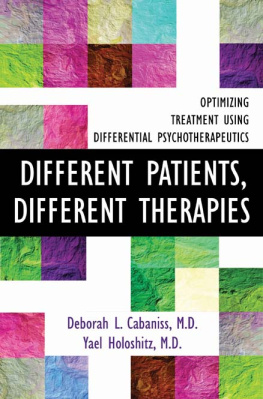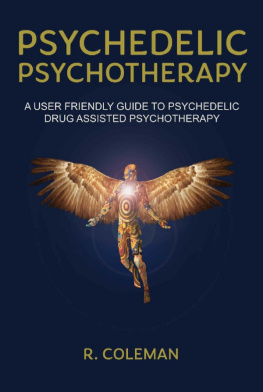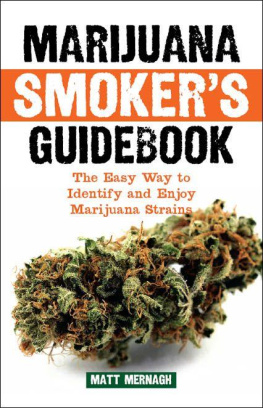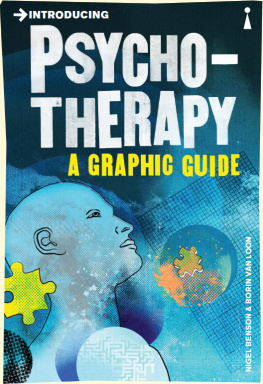Richie Herink - Psychotherapy Guidebook: Easy to Understand Guide Features Descriptions of 255 Different Therapies
Here you can read online Richie Herink - Psychotherapy Guidebook: Easy to Understand Guide Features Descriptions of 255 Different Therapies full text of the book (entire story) in english for free. Download pdf and epub, get meaning, cover and reviews about this ebook. year: 0, genre: Science. Description of the work, (preface) as well as reviews are available. Best literature library LitArk.com created for fans of good reading and offers a wide selection of genres:
Romance novel
Science fiction
Adventure
Detective
Science
History
Home and family
Prose
Art
Politics
Computer
Non-fiction
Religion
Business
Children
Humor
Choose a favorite category and find really read worthwhile books. Enjoy immersion in the world of imagination, feel the emotions of the characters or learn something new for yourself, make an fascinating discovery.

- Book:Psychotherapy Guidebook: Easy to Understand Guide Features Descriptions of 255 Different Therapies
- Author:
- Genre:
- Year:0
- Rating:3 / 5
- Favourites:Add to favourites
- Your mark:
- 60
- 1
- 2
- 3
- 4
- 5
Psychotherapy Guidebook: Easy to Understand Guide Features Descriptions of 255 Different Therapies: summary, description and annotation
We offer to read an annotation, description, summary or preface (depends on what the author of the book "Psychotherapy Guidebook: Easy to Understand Guide Features Descriptions of 255 Different Therapies" wrote himself). If you haven't found the necessary information about the book — write in the comments, we will try to find it.
Richie Herink: author's other books
Who wrote Psychotherapy Guidebook: Easy to Understand Guide Features Descriptions of 255 Different Therapies? Find out the surname, the name of the author of the book and a list of all author's works by series.
Psychotherapy Guidebook: Easy to Understand Guide Features Descriptions of 255 Different Therapies — read online for free the complete book (whole text) full work
Below is the text of the book, divided by pages. System saving the place of the last page read, allows you to conveniently read the book "Psychotherapy Guidebook: Easy to Understand Guide Features Descriptions of 255 Different Therapies" online for free, without having to search again every time where you left off. Put a bookmark, and you can go to the page where you finished reading at any time.
Font size:
Interval:
Bookmark:
The Psychotherapy Guidebook
Easy to Understand Descriptions of 255 Different Therapies
Richie Herink & Paul R. Herink
Second Edition
e-Book 2015 International Psychotherapy Institute
All Rights Reserved
This e-book contains material protected under International and Federal Copyright Laws and Treaties. This e-book is intended for personal use only. Any unauthorized reprint or use of this material is prohibited. No part of this book may be used in any commercial manner without express permission of the author. Scholarly use of quotations must have proper attribution to the published work. This work may not be deconstructed, reverse engineered or reproduced in any other format.
Created in the United States of America
Copyright 2012 by Richie Herink and Paul Richard Herink
We would like to thank the following people who played key roles in making The Psychotherapy Guidebook possible:
Sherida Bush, who edited the individual articles and Buddy Skydell who did the copyediting,
The people who were involved in the publication of the prior edition of this book,
The contributing authors, for without them there would be no Psychotherapy Guidebook,
The actual number of systems and techniques of psychotherapy in existence today is unknown. Therapies such as Psychoanalysis, Transactional Analysis, Behavior Modification, Gestalt, and Client-Centered Therapy have been well publicized. Others, such as Poetry Therapy, Filial Therapy, Exaggeration Therapy, and Psychomotor Therapy, are virtually unknown except to their small circles of practitioners and patients. The reason that the latter are less well known may simply be because their originators do not have a flair for publicity, or because most therapists are interested and involved only in their own schools and forms of treatment, or because the major professional journals, in which therapeutic modalities are described, have very limited circulation. Moreover, since therapists in general have limited knowledge of the range of therapeutic systems and techniques available to them, their patients are often fitted into the treatment mode with which the particular therapist is familiar, rather than into one that is most suitable for the patients special problem(s).
Similarly, patients are unaware of the variety of modalities that are available. Thus, they have no way of knowing how to select the right therapist for their problem(s), or how to make sure that they are receiving full value for the often expensive investment therapy demands. These facts point up the need for a comprehensive guide to the various psychotherapies. This handbook was developed in response to this need.
The working definition of the term psychotherapy that was used to produce this compendium is intentionally broad so that all psychotherapeutic interventions, regardless of philosophic orientation, could be considered for inclusion. In this context, psychotherapy is an umbrella term for all activities involving one or more patients or clients and one or more therapists, which are intended to improve a patients or clients feelings of psychological well-being.
An extensive search of the available literature, the first step taken in preparing this book, produced a list of over 350 psychotherapeutic systems and techniques. This list is not definitive, however, since depending on how wide the net is cast, there may be said to be as many psychotherapies as there are therapists (or perhaps even as many as there are patients!). The variety of interventions reflects human diversity and illustrates that there are many approaches toward freeing man from himself the goal of all psychotherapies.
The present format of this book was chosen because the diversity of therapies is far too great for any individual to be able to master, distill, and adequately describe all of them with any degree of success or fair-mindedness. With a few exceptions, the articles in this book were written to a uniform format and length so that each modality can readily be compared to the others. The contributing authors are all professionals in the mental health field. They were selected because they are recognized as either originators of or authorities on the therapies they describe.
The individual descriptions have not been classified because many of them do not easily fit into well-defined categories. For example, Behavioral Family Therapy can be classified as either a family or a behavioral therapy. The therapies are listed in alphabetical order by keyword. This made it possible to group related interventions together. Alphabetical order was also the scheme favored by the contributors who did not want their therapies either to be identified with any particular philosophy or to become subordinate to some well-known therapy in a particular category. This compendium, therefore, avoids highlighting the philosophical schisms that exist between various schools of psychotherapy. It submerges the differences by focusing on the therapies themselves. It considers the modalities as being to the therapist what drugs are to the physician, i.e., tools and strategies that can alleviate human problems. Thus, this guidebook was planned as a neutral document that primarily seeks to report on the field of psychotherapy as it exists today.
Richie Herink, Ed.D., Ph.D.
Ridgewood, New Jersey
This guide is based on the ground-breaking book The Psychotherapy Handbook which was copyrighted and published in 1980. It has been reprinted numerous times since then. It is now out of print for various reasons including a management change at the books publisher.
The recently awakened interest in the effectiveness of talk therapy vs. drug therapy has created a professional and public demand for information about the numerous non-drug related therapies that are available to the therapists. Since this topic was the original books primary focus, it is being reissued in the form of this guidebook to fill this need and to make it more readable in book form.
This guidebook provides an extensive overview of the psychotherapies that have been sited in major reference sources including: Psychological Abstracts, The American Journal of Psychotherapy, Psychology Today, Human Behavior, Dissertation Abstracts, book searches in the New York Public Library and other related venues; plus recommendations from practitioners.
In all, 350 therapies are identified and documented. The total number was reduced to 255. The reasons for rejection include: same therapy but under a different name, overlaps with another therapy, nothing unique, frivolous, a non-therapy therapy, and so on.
From numerous studies over the years, we know that an aha moment of insight (or personal paradigm shift) can trigger a psychological change. It can occur at any time and in any place and it can be initiated by any action or event. For example, when crossing the street, while baking a cake, during free association, when listening to music, during conversation, lying on a therapists couch, smelling a new aroma, and do on. The serendipitous nature of the insight process is what makes so many different therapies work.
While there may be many more therapies existent than the 255 described here, the intent was to provide a comprehensive but not an overwhelming overview of the variability of the different types of therapies that have been developed.
When reviewing the descriptions, remember the saying that: what the therapist thinks makes the therapy work is different from what the patient thinks makes it work, and that they are probably both wrong. In the final analysis, there may even be as many therapies as there are therapy sessions.
How we define and attempt to treat mental illness depends on how we define a psychologically normal human being. This is a task that has yet to be accomplished to everyones satisfaction. This is why there are so many therapies represented in this guidebook.
Next pageFont size:
Interval:
Bookmark:
Similar books «Psychotherapy Guidebook: Easy to Understand Guide Features Descriptions of 255 Different Therapies»
Look at similar books to Psychotherapy Guidebook: Easy to Understand Guide Features Descriptions of 255 Different Therapies. We have selected literature similar in name and meaning in the hope of providing readers with more options to find new, interesting, not yet read works.
Discussion, reviews of the book Psychotherapy Guidebook: Easy to Understand Guide Features Descriptions of 255 Different Therapies and just readers' own opinions. Leave your comments, write what you think about the work, its meaning or the main characters. Specify what exactly you liked and what you didn't like, and why you think so.









